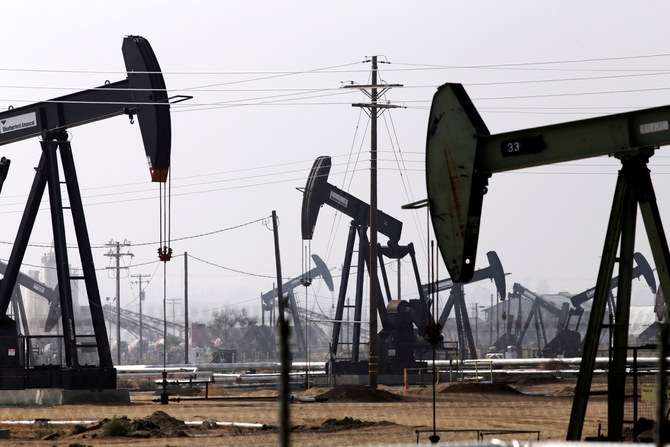HOUSTON: Oil prices slid 4 percent on Wednesday, with losses accelerating after US data showed crude and gasoline stockpiles unexpectedly surged last week after OPEC+ said it would raise its oil output target by just 100,000 barrels per day.
Brent crude futures settled down $3.76, or 3.7 percent, at $96.78 a barrel. West Texas Intermediate crude futures fell $3.76, or 4 percent, to $90.66. Both contracts had seesawed earlier in the session.
The premium for front-month Brent futures over barrels loading in six months’ time is at a three-month low, indicating waning concern about tight supply. The same premium for WTI futures neared a four-month low.
US crude oil inventories rose unexpectedly last week as exports fell and refiners lowered runs, while gasoline stocks also posted a surprise build as demand slowed, the Energy Information Administration said.
Crude stocks rose 4.5 million barrels last week, compared with an analyst forecast for a draw of 600,000 barrels. Gasoline stocks gained 200,000 barrels, versus expectations for a 1.6 million-barrel drop.
“The crude oil number is well above expectations. Gasoline is a disappointment. You should never see a build in gasoline during summer. It is a very bearish report,” said Bob Yawger, director of energy futures at Mizuho.
Also weighing on prices, top Iranian and U.S. officials said they were traveling to Vienna to resume indirect talks about Iran’s nuclear program, reviving the all but vanished hopes of a removal of sanctions hampering Iranian oil exports.
Prices were also hurt when San Francisco Fed President Mary Daly warned of a 75 basis point interest rate hike if inflation continued. Richmond Fed President Thomas Barkin also said that the Federal Reserve was committed to getting inflation under control and returning it to the US central bank’s 2 percent target.
The US dollar index, which tracks the greenback against six major peers, also rose, pressuring demand by making oil more expensive for holders of other currencies.















